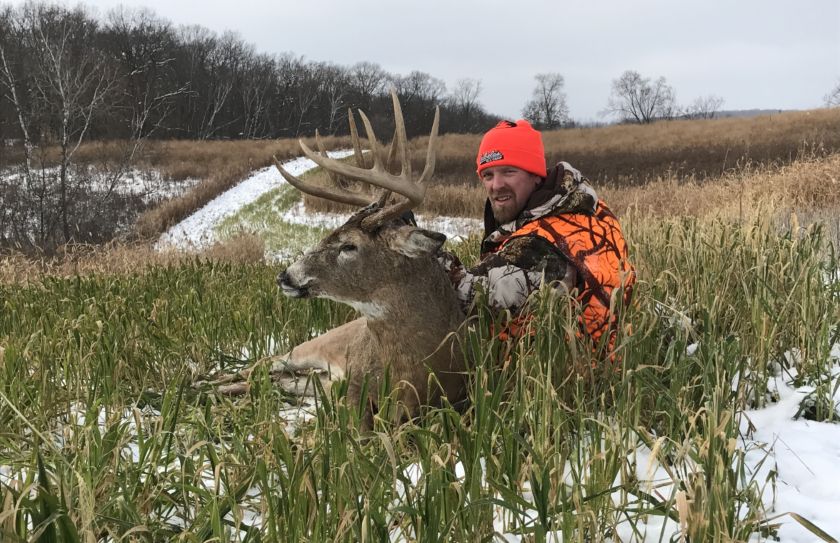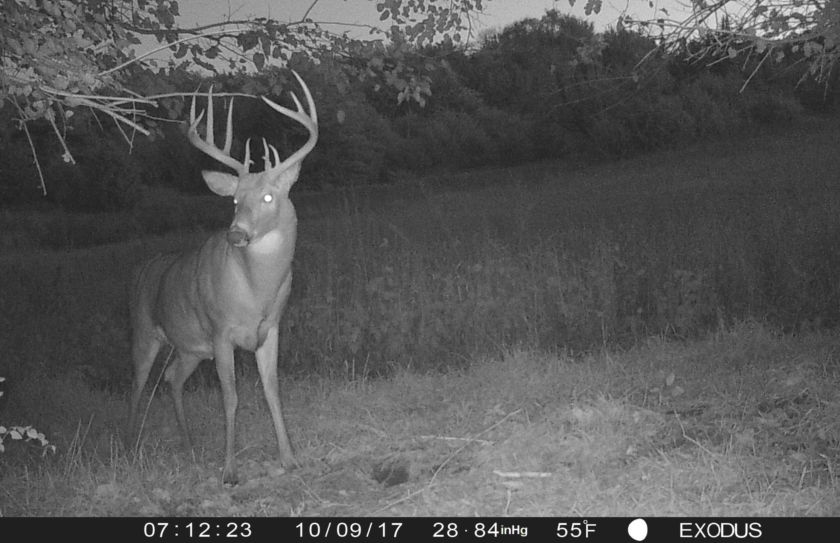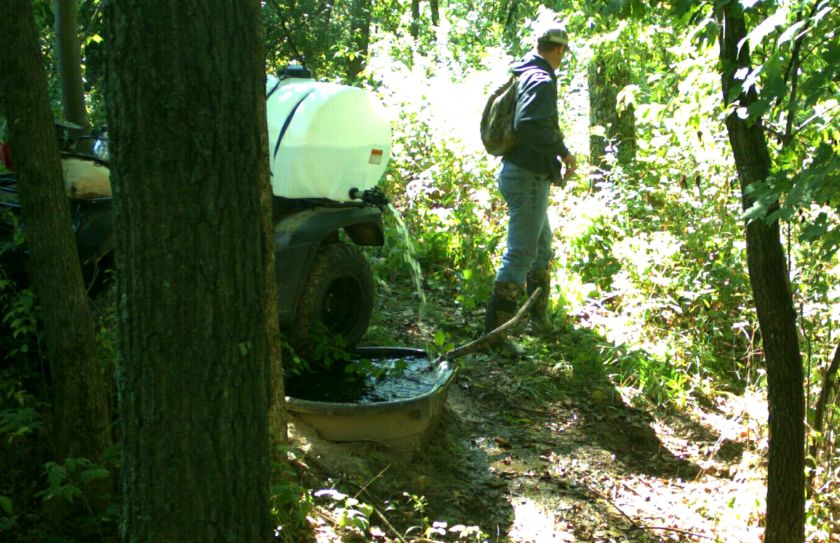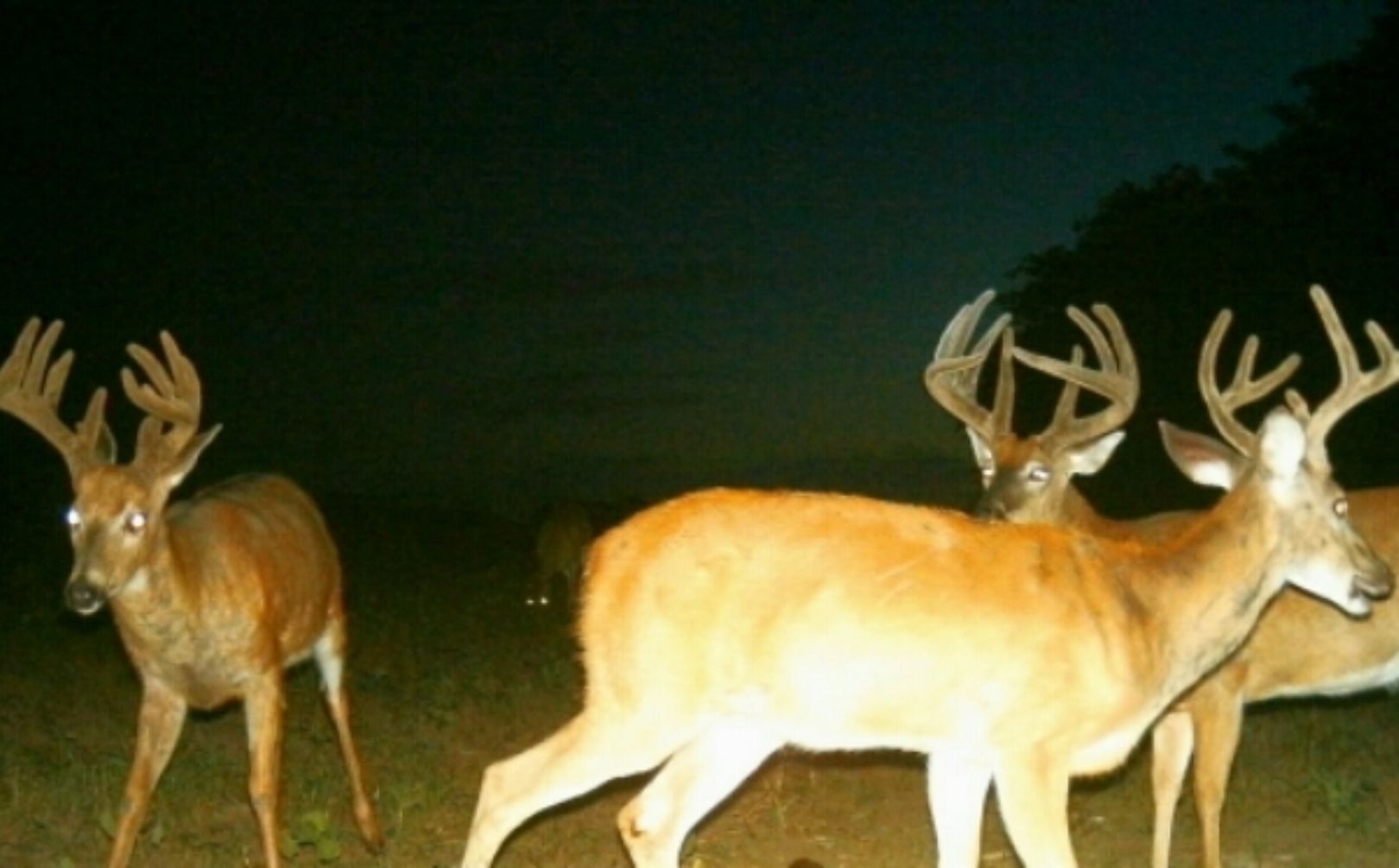
-Does the land that you hunt contain giant bucks and an incredible deer herd? If so, there are probably several reasons for that
-Does the land that you hunt contain zero bucks and an occasional deer? If so, there are probably several reasons for that
Make sure to score your lands mature buck potential below:
The idea that there are several reasons that contribute to the mature buck potential for the land that you hunt, most likely isn't a newsflash to you. However, I think it helps to recognize the conditions of success that work together to create deer hunting hotspots. Whether you are looking to purchase your own little hotspot, or you are looking to find a public land honeyhole, your ability to recognize the potential of the habitat will be critical to your success. At the same time, it never hurts to take a good hard look at your current land in an effort to help you avoid fighting an uphill battle with resources that may not be complimented by the conditions. I would love to see you take the time to score your own level of the mature buck potential for hunting land, on your own land. Where do your own hunting grounds rank?

If you enjoy advanced whitetail strategies, you'll love my Whitetails By Design Book Series!
Mature Buck Potential for Hunting Land Ranking Criteria:
This is a guide to help you assign a value to the land that you hunt, or that you may be hunting in the future. Are there other factors? Sure! However, these are the most common hunting and habitat conditions that I have personally experienced. It will be interesting to see how your own land stacks up! I have used my combined experience of working in nearly 20 whitetail states, to rank these mature buck priorities in their order of the most important to the least important (although ALL are critical to your success).
1. Variety of Habitat (0-7 points)
The ultimate in habitat diversity contains a healthy mix of not only mixed-age habitat, but a variety of habitat as well. The perfect blend of hardwoods, conifers, shrubs, weeds, grasses and briars is admittingly hard to find but when you find it-hold on to it! Habitat diversity equals both food and cover for each month of the year, which is critical for you to be able to attract, hold and promote a quality herd on your small parcel. The local wildlife benefits as a whole from habitat diversity, from small game to song birds to game birds. If you have 3 or more components of habitat diversity on your land, including conifer, shrubs, hardwoods or grasses/weeds/briars...you are well on your way to mature buck success.
Also, don't underestimate the power of the land to allow you to easily install a solid representation of food plots, that are in balance with the needs of your particular habitat and herd. Food plots can provide in many cases, 10Xs more food (or more!) than the local habitat will provide. Also, food plots can be installed within a small package to offer highly defined deer patterns during times of the year when you need food the most. Consider all varieties of food important, but keep in mind that an effective food plot of moderate size, can often provide more food in 1 specific location, than the rest of the native vegetation on the land combined.
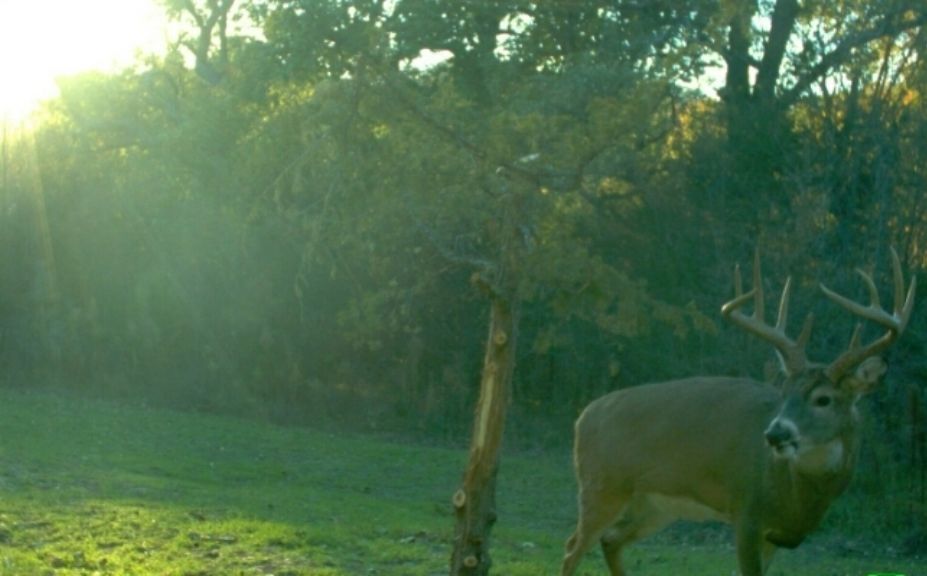
*Read about "Hunting Season Food Plot Diversity" here.
-Some of the best mature buck habitat that I have personally seen has been within upland settings of mixed mature pockets of various habitat, surrounded by the diversity of early successional growth including young pines, shrubs, hardwoods and various weeds or grasses. These habitat combinations are also typically ideal for installing a variety of food plot creations.
2. Hidden Deer (0-6 points)
Whether it's because of elevation change or diversity of habitat, the ability of the land to hide you from deer, is critical to your success. Even on parcel sizes of 20 acres or less, if you can't see deer...or more importantly, if the deer can't see YOU...then your ability to move throughout the land undetected will greatly aid in your efforts. If you want to create a food source, can you hide deer within the food so that they can feed undisturbed, even as you walk about the property? Is that great looking bedding area on public land near a road or parking area?
-There are very few hidden hotspots of quality habitat regardless of if the land is public or private. The importance of the potential for you to be able to hunt both hidden food and cover can not be over stated.
3. Multiple Access Points (0-5 points)
Your ability to access your next mature buck hotspot from multiple directions can pay huge dividends for season-long usage. I have experienced that deer can pattern us as hunters, much better than we can pattern them. By using the same access points over and over again, we continue to define our movements each time we enter the woods. I prefer to keep the deer guessing! Being able to use various access routes for morning hunting, evening hunting and even with varying wind patterns can constantly keep the local deer herd from really getting a firm handle on where you will show up next.
-Public land hunting can be outstanding while taking the hard way in during the morning hours, and the easier way out when your hunt is over during the evening. The majority of hunters take the easy way in, and why not? However, by taking a "backdoor approach" well away from the traditional hunter travel routes, you can often get ahead of deer that will be pushed your way by the annual invasion of camo and orange.
4. Topographical Change (0-4 points)
As a Michigander for nearly all of my life, I will always love my home state. But, Michigan sure is flat! Even if MI and WI shared he exact same hunting regulations, with the exact same hunter and deer numbers-Wisconsin would still have an older age structure of bucks. Why? Because of the topographical change in the best of counties. Hills hide deer, period. On a mature hardwood 40 acre parcel in MI, it's not uncommon to be able to see across the entire parcel and out of the other side. Not so in much of WI! With 500' changes in elevation common within the Mississippi bluff country deer have plenty of places to hide and travel while avoiding hunters...even if the habitat is less than ideal.
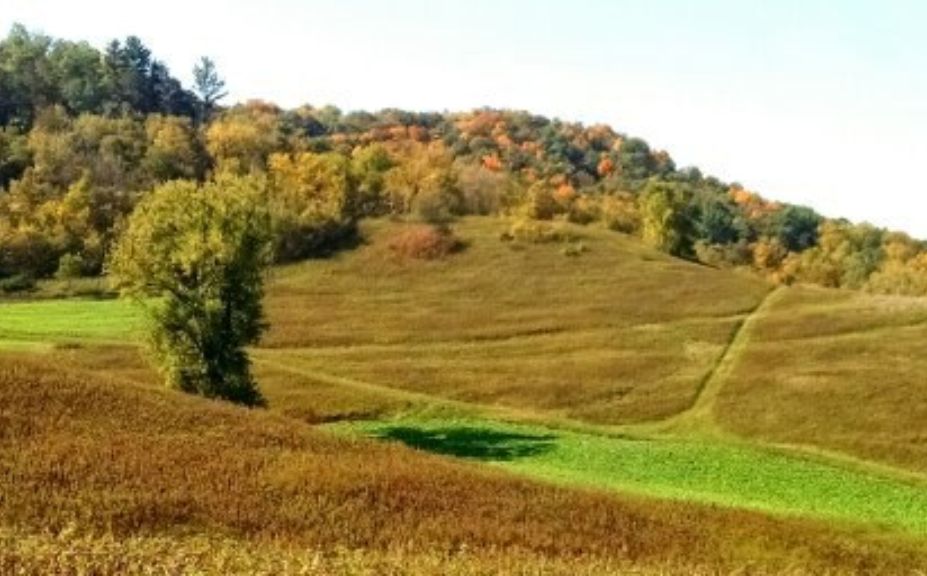
*Do you need help hunting hills? Try reading,"Hill Country Whitetails".
-Several of my SW WI stand locations have required more than a 400' change in elevation climb, and nearly an hour in walking. Is it easy? No! Could every hunter make that climb, or even want to make that climb? No, and that's just one of the reasons that bucks simply grow older in hill country when compared to an otherwise similar, flat-land parcel.
5. Age of Habitat (0-3 points)
A portion of "habitat diversity" comes from that actual age of the habitat. Deer are creatures of "edge", and any monoculture, single-aged habitat lacks any edge no different than a corn field, cedar swamp, or stand of mature hardwood. Although a stand of stately, mature hardwoods can be beautiful, your potential for success is limited whether it stays all old, or young. And the same can be said for conifer as well, shrubs, various grasses and native regeneration.
-Although public land may lack the diversity of a variety of habitat types, you can bet that where any recent logging has taken place, a huge increase in overall wildlife populations numbers follow; and that includes deer!
6. Water (0-2 points)
Let me ask you a question: "Is it better to hunt a parcel that offers a major water source, or not?" I personally have found that if your land lacks water, as well as the land around it, than a premium can be place on any water that is offered. Being able to use small water sources of water tanks and shallow ponds to specifically define how deer travel can be one of the greatest single habitat additions to your hunting efforts. Deer do not need a lot of water! Just small amounts of water strategically located to assist you while hunting is enough. However, if your land is full of creeks, rivers, swamps, ponds and lakes...the lower the value of any water that you wish to help you during your hunt. In fact, on a "wet" parcel, adding water can go completely unnoticed with no value at all.
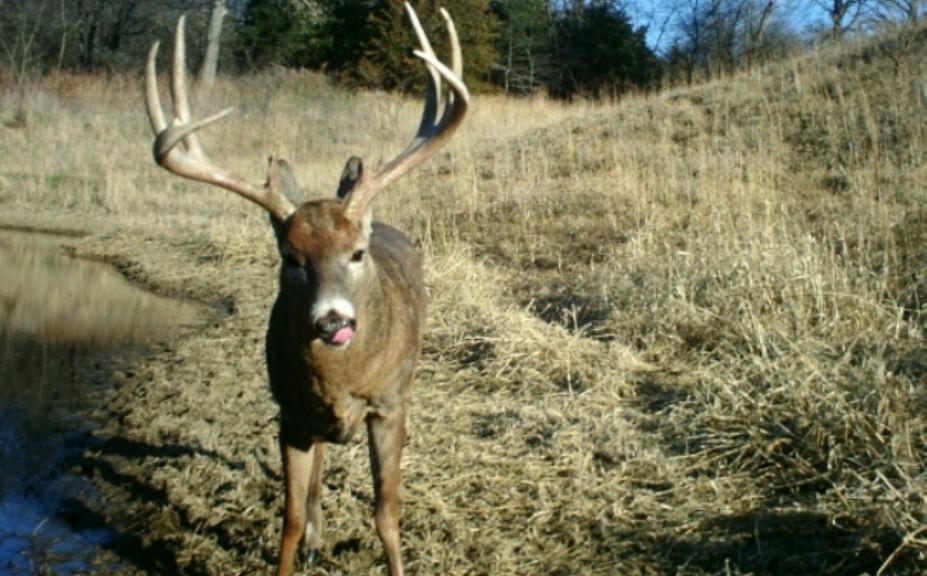
*Try reading"Easy Waterhole Creations"for simple yet effective waterhole creations.
-Are you considering adding water for deer? Think small! The smaller the water source that you offer, while still being able to offer a continuous water source, the more precise of deer movements that you can create. Deer do not need a 1/2 acre pond, however fish do! So, if you want to build a fish pond think big, but for deer...a water source the size of a pick-up bed can be perfect!
7. Adjacent Large Tracts (0-1 point)
Maybe the land that you hunt only contains a few dozen acres, but does it really matter? Depending on the contiguous amount of unpressured neighboring property, your little micro hotspot can appear much, much larger. At the same time by recognizing a hunting land that promotes hidden quality habitat features, it is often quite easy to tap into a neighbor's high quality deer herd.
-Public land often gets a bad rap, and in some cases rightfully so! However, in other cases public land can be inaccessable and blocked by small, private land parcels. Vast and unpressured public land tracts may lack in the overall level of quality habitat, but those same tracts can sometimes make up for the lack of habitat, with an older age class of bucks that rarely see another hunter. Whether your new honeyhole is located near expansive public or private land, it pays to be able to tap into a larger parcel's potential.
Scoring the Mature Buck Potential
*Simply add up the number of points that the land you hunt on achieves. I think that you could place an even higher value on the highest points....basically a 7 point range for habitat diversity, 6 points possible for hidden deer, 5 potential points for multiple access routes and so on; but to keep it simple you may just want to score each area a 0 or 1.
1. A score a 6 or 7 (22-28) is really hard to beat!
2. A 4 or 5 (16-22) has some room to improve but there is certainly hope.
3. However, if the land that you hunt falls into a score of 1-3 (15 or less), the effort needed may be more than it's worth if your goal is to harvest mature bucks.
My current SW WI lands would roughly score a 22 out of 28 for combined points. Although not the best, I am actually pretty happy with the potential of the land, as well as the early success!
Conclusion
The mature buck potential for hunting land may be painfully obvious! The small details of giant rubs, an over abundance of scraping activity and all the signs of a plentiful deer herd are hard to miss. But sometimes it's the major details of the various habitat and hunting features that go unnoticed when scouting or buying your next spot to hunt.
Maybe, it's just not that easy to predict the mature buck potential for hunting land; or maybe it is? Sometimes the more objectively we look at something the more clearly we can arrive at an accurate decision. I urge you to not only "score" the land that you currently hunt, but the lands of years past. Do you see any common trends like those mentioned above? And if you do, then the next step involves your future hunts. If you can change the conditions that's great, but on the otherhand it may be time to just find a new location based on the above criteria.
Keep in mind that the mature buck potential in one area of a state or region could be a lot different than another. "It is all relative". For example in most areas of MI you can find lands that feature a true chance at a 3 year old buck every season...with an occasional chance at a 4 year old every few years. But in Kansas that level of expectation could commonly be a 5-7 year old buck to potentially harvest every single year.
Searching for land with the perfect score will give you a monster headache! Distance from home, cost, family and other factors have to be balanced as well. Like I mentioned earlier I am very happy to be hunting land with a mature buck potential of "22", particularly after balancing the rest of life's influencing priorities.
What does your land score?
